Feasibility of Additional Wastewater Treatment Plants for Water Quality Improvement at Nong Han Lake, Sakon Nakhon, Thailand
on
Feasibility of Additional Wastewater Treatment Plants for Water Quality Improvement at Nong Han Lake,
Sakon Nakhon, Thailand
Pluem Chuaychoo and Natthapong Proysurin
FEASIBILITY OF ADDITIONAL WASTEWATER TREATMENT PLANTS FOR WATER QUALITY IMPROVEMENT AT NONG HAN LAKE, SAKON NAKHON, THAILAND
Pluem Chuaychoo1* and Natthapong Proysurin1
-
1 Asian Institute of Technology (AIT), 58 Moo 9, Km. 42, Paholyothin Highway, Klong Luang, Pathum Thani, 12120 Thailand *Corresponding author: st120338@ait.asia
ABSTRACT
This study examined the possibility of additional wastewater treatment plants for the Nong Han Lake, Sakon Nakhon, Thailand. Hybrid constructed wetlands with horizontal and vertical flows (HFCW and VFCW) were selected for efficient nutrient removal, ease of operation and maintenance, and provision of recreational open space. The design is approximately 70,000 m2 (7 ha)—a decision made considering land availability for stabilization ponds where municipal wastewater carried Received: through pipelines or sewerage accumulates, constructed wetland cells,
-
7 December 2022 and pumping stations. In HFCW and VFCW, nutrients are removed by
the mechanisms of plant uptake and microbial metabolism. Results
Accepted: showed that HFCW reduced organic compounds, such as biochemical
-
10 January 2023 oxygen demand (BOD), by more than 90%, and VFCW removed at
least 70% of nitrogen from wastewater. In addition, substantial
Published: reductions of up to 95% and 80% were obtained for total suspended
27 February 2023 solids (TSS) and phosphorus, respectively.
Keywords: constructed wetland, horizontal flow, vertical flow, Nong Han Lake, Thailand
INTRODUCTION
Nong Han Lake, located in northeastern Thailand in the Sakon Nakhon Province, is the largest freshwater resource in the country. This ecological reserve is used for fisheries, agriculture, water production, and recreational activities. Despite its numerous benefits for the population, the lake is utilized to dispose of wastewater treatment effluents and untreated wastewater from nearby settlements. As a result, sediment
accumulation, excess nutrients, and eutrophication are decreasing the freshwater quality.
Domestic and industrial wastewater from two subdistricts, Meung Sakon Nakhon and Tha Rae, is treated in two existing wastewater treatment plants on the west side of the lake. However, as the water quality continues to decline, additional plants are needed to accommodate wastewater from the other side (i.e., the east). Therefore, this paper
examines the feasibility of additional wastewater treatment plants at Nong Han
MATERIALS AND METHOD
Study Area
-
Figure 1 shows a map of the Nong Han Lake, depicted in white, and its red-colored catchment boundary. The lake area was defined by connecting point locations at 155 m above sea level (masl) because the lake surface elevation is 155 m. Based on this method, the lake area is 123 km2, with a water surface of approximately 73.6 km2. The average depth varies from 2 to 10 m depending on the season.
The catchment was delineated by drawing a line linking the highest points above the lake, creating a basin-like area where the elevation decreases towards the lakeshore. Runoff on this sloping terrain is drained into the lake by more than ten canals before ultimately being discharged through the Nam Kam Gate in the south into the Mekong River (CSDI, n.d.).
The catchment area is mainly used for settlements, farmlands, industry and business activities, and public services. Therefore, the generated wastewater is categorized as domestic,
Lake.
agricultural, or industrial. Of the wastewater discharged from within two subdistricts (Meung Sakon Nakhon and Tha Rae), 70% is treated in two wastewater treatment plants.
Physical and chemical water qualities
The lake water quality was based on a previous study by Sukthanapirat et al. (2017), which measured electrical conductivity (EC), NH3-N, dissolved oxygen (DO), NO3-N, total phosphorus, chemical oxygen demand (COD), and biological oxygen demand (BOD) at ten observation points as seen in Table 1. Further analysis of these parameters produced water quality index (WQI) values for all designated purposes, including aquatic life protection (WQIAL), human consumption (health) (WQIHI), and agriculture (WQIAG). Results showed that the lake water’s physical and chemical characteristics meet the requirements for all purposes and are categorized into good-quality water for agricultural use and moderatequality water for aquatic life protection and human consumption
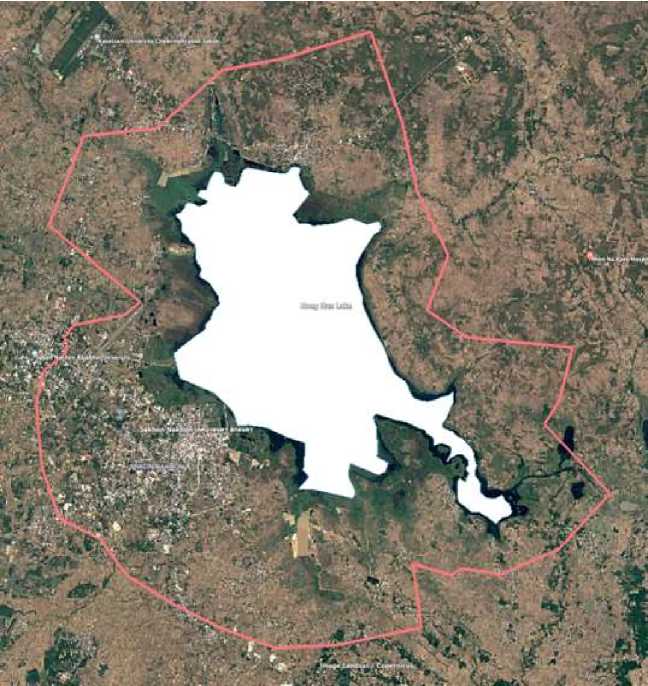
Figure 1. Map of Nong Han Lake and its catchment area
Table 1. Physical and chemical water qualities of the Nong Han Lake.
|
Parameters |
Unit |
Range |
|
pH |
- |
6.92–7.62 |
|
Electrical conductivity (EC) |
mS/m |
8.35–35.3 |
|
NH3-N |
0.03–1.09 | |
|
Dissolved oxygen (DO) |
1.14–7.16 | |
|
NO3-N |
mg/L |
0.18–2.48 |
|
Total phosphorus |
0.0–0.09 | |
|
Chemical oxygen demand (COD) |
6.4–51.2 | |
|
Biochemical oxygen demand (BOD) |
2.0–6.25 |
(Sukthanapirat et al., 2017)
Lake’s ecological status
As seen in Figure 1, Nong Han Lake is home to diverse phytoplankton species, with green algae of the desmids
group being dominant. Rotifers and copepods, the natural food for many fish larvae, make up the most zooplankton groups that are vastly distributed across
the lake. In addition, red-tailed rasbora (Rasbora borapetensis), Siamese glassfish (Parambassis ranga), and three-stripe gourami (Trichopsis schalleri) are
found in abundance. The lake is also a habitat for other species, such as shrimps and clams (Saengmek et al., 2018).
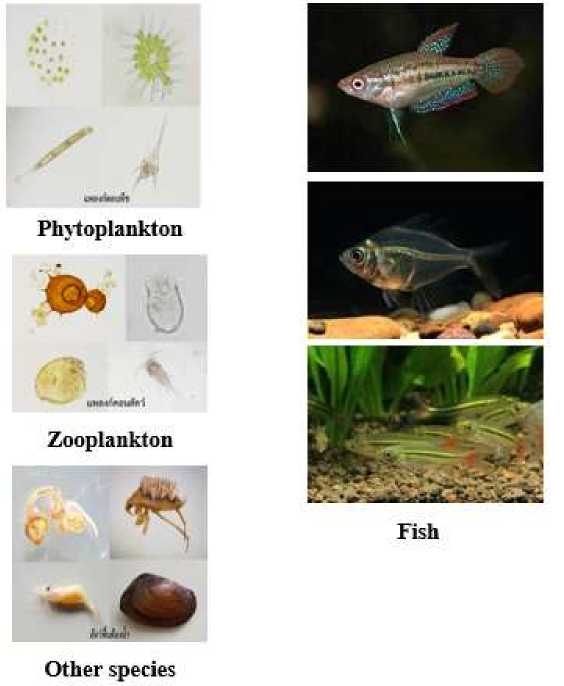
Figure 1. Images of aquatic species found in the Nong Han Lake
(Saengmek et al., 2018, siamensis.org, 2016), Fishbase, n.d.
Site selection for additional wastewater treatment plants
-
Figure 2 shows that the lake is divided into two sides: west and east. Two municipal wastewater treatment plants, depicted in yellowish-green, serve two subdistricts on the west but none for the eastern region. Therefore, wastewater with poor to no treatments in the east is directly
disposed of into the lake.
According to the Sakon Nakhon Development Office (2019), the provincial government proposed a plan for improving the Nong Han Lake water quality, which includes (1) improving existing wastewater treatment plants and (2) constructing other municipal plants around the lake. Figure 3 shows the current and proposed locations of 4
these plants. The government’s strategies, however, do not include future tentative treatment facilities on the east side. Therefore, the plant designed in this study would be located east of the lake.
Selection of wastewater sources and feasibility study of replicable constructed wetlands
Thailand produces 9.7 million m3 of wastewater daily (PCD, 2019). Domestic wastewater undergoes on-site preliminary treatment made with different technologies: commercialized septic tank systems (6%), pit latrines (4%), conventional septic tanks (6%), or cesspools (84%). The outlet is connected to the treatment plant with a sewer. Only 95 of the 105 plants are active
to accommodate 27% of total wastewater (PCD, 2019). The remaining 73%, which accounts for 7.3 million m3 of wastewater per day, is partially treated in on-site sanitation facilities (Nookyoo, 2019). However, the resulting effluents are disposed of directly into the lake without additional treatments, thus raising a major environmental concern.
Around 386,000 people live near the Nong Han Lake in Sakon Nakhon. However, only several settlements scattered on the east side of the lake were identified as the sources of untreated wastewater as seen in Figure 4. These settlements cover a large area, are less densely to densely populated, and are occupied mainly by farm households.
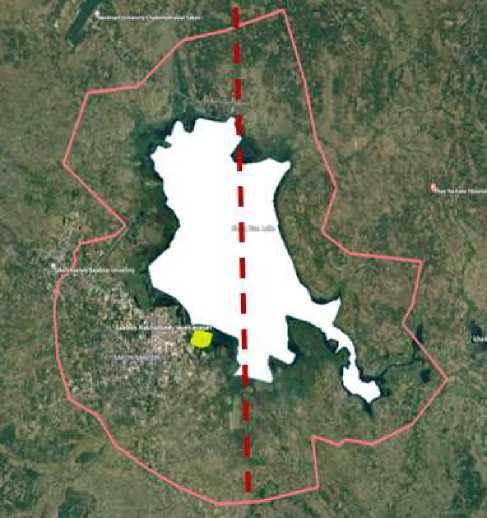
Figure 2. Two sides of the lake and existing wastewater treatment plants (yellowish-green)
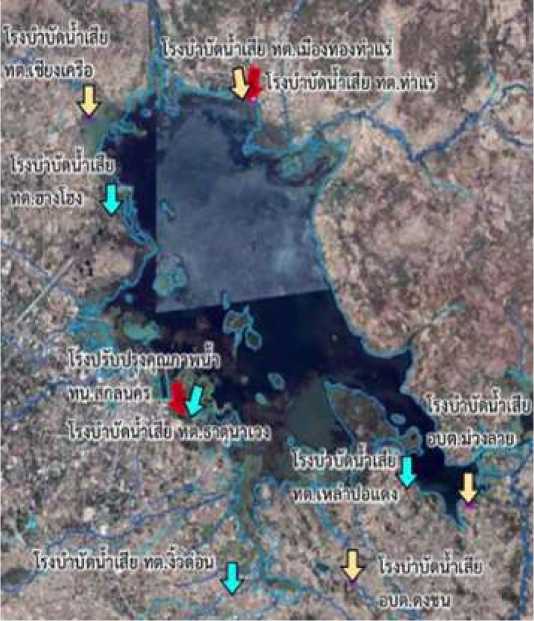
Figure 3. Locations of existing and future wastewater treatment plants
(Sakon Nakhon Development Office, 2019)
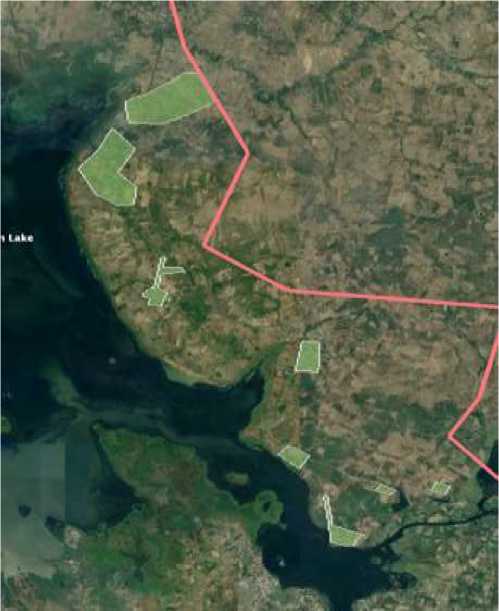
Figure 4. Settlements scattered on the east side of the Nong Han Lake
Various wastewater treatment systems and technologies are conceptually suitable for densely populated areas, including mechanical systems, such as activated sludge, and nature-based systems like constructed wetlands (CWs). However, since the scattered settlements are not connected to a sewer system, the effluents of existing on-site treatment facilities are discharged directly into the soil or nearby water bodies. As a result, domestic wastewater eventually seeps into the ground, reaches the groundwater level, and
flows into the Nong Han Lake. Therefore, secondary on-site treatments are needed to prevent lake water contamination by poorly treated wastewater. An example includes a
constructed wetland (CW) system. According to a feasibility study by Sonavance et al. (2007), CW proves effective in treating septic tank effluents.
Data collection and analysis
Due to travel restrictions imposed to curb the spread of the global COVID-19 pandemic, the research used and analyzed available secondary data and other information about the selected areas. These data were obtained from reliable reports by public organizations and published articles. The wastewater treatment facilities were
designed conceptually based on map analysis and data calculation results shows in Figure 5.
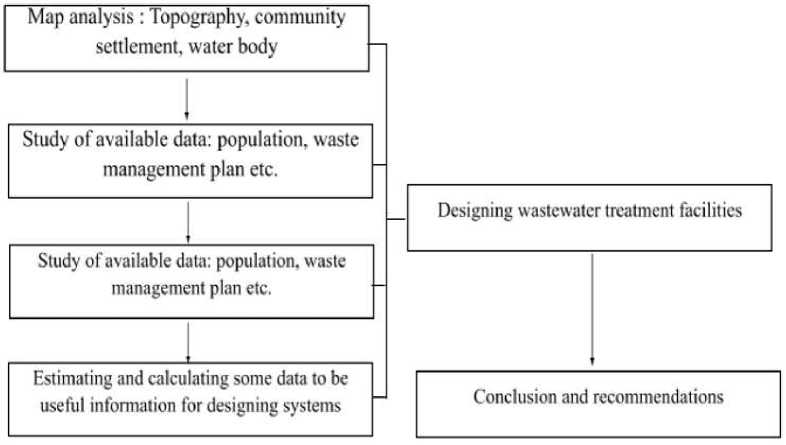
Figure 5. Flowchart of the conceptual design of additional wastewater treatment facilities
RESULTS AND DISCUSSION
Selected settlements based on current wastewater treatment characteristics
Rural communities in Thailand tend to form clustered settlements where the
generated wastewater drains into concrete sewers or open channels and is later conveyed to small canals and, ultimately, water bodies like rivers, reservoirs, or lakes. Therefore, settlements on the east side of the lake in the Pone Na Kaew Subdistrict
were selected to represent the wastewatercontributing areas. The subdistrict has three densely populated settlements from which wastewater is transported in large canals into the lake. The locations of the three communities are shown in Figure 6.
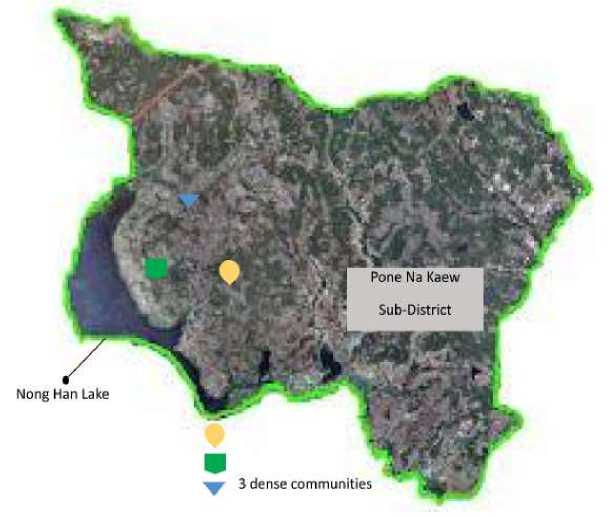
Figure 6. Location of the settlements or communities contributing to domestic wastewater discharge near the Nong Han Lake
Wastewater’s flow rate and estimated quality
The domestic wastewater flow rate was calculated based on population number. The area observed has approximately 25,380 inhabitants that generate 0.3 m3 of wastewater per day. In total, the flow rate is about 7,600 m3/day, assuming the entire domestic wastewater drains into the sewage system. The effluent
characteristics were estimated using the data from the Pollution Control Department (PCD, 2017) as seen in Table 2. Based on the quality standards by the Thailand government, suspended solids, BOD, Total Kjeldahl Nitrogen (TKN), and total phosphate exceeded their respective maximum permittable levels in domestic wastewater.
Table 2. Estimated wastewater characteristics discharged from selected settlements compared with Thailand’s wastewater quality standards
|
Parameter |
Unit |
Mean Value |
Quality Standard |
|
pH |
- |
7.50 |
5.5-9.0 |
|
Suspended solids (SS) |
mg/L |
300 |
< 50 |
|
Biological oxygen demand (BOD) |
mg O2/L |
160 |
<20 |
|
Total Kjeldahl Nitrogen (TKN) |
mg N/L |
50 |
<20 |
|
Total phosphate |
mg P/L |
20 |
<2 |
(Pollution Control Department, 2017, Ministry of Industry, 2017)
Rationales behind the recommended constructed wetland type
A constructed wetland (CW) is a natural process employed for wastewater treatment. It relies on microorganism activities and the mechanism of plant uptake to remove organic matter, nutrients, and toxic compounds (Dotro et al., 2015). This system is generally applied in rural areas because of its simple and low-cost operation and maintenance relative to other wastewater treatment technologies. The CW designed for the study area was determined based on several criteria:
pollutant removal efficiency, ease of operation and maintenance, and provision of recreational open space. A hybrid CW that integrates horizontal and vertical flows (HFCW and VFCW) was chosen to remove pollutants from wastewater because the combined system has better removal efficiency and requires less frequent maintenance than single-type CWs (e.g., vertical flow only) (Yazdani & Golestani, 2019). The hybrid CW design is presented in Figure 7.
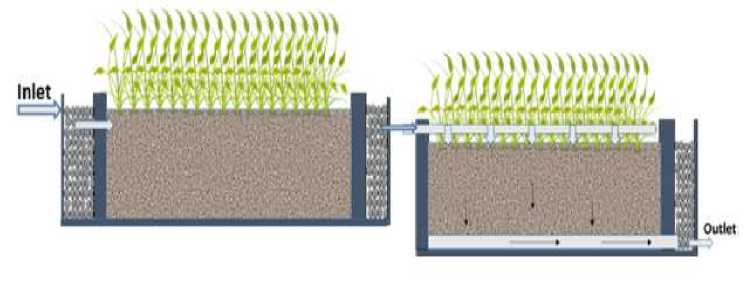
Figure 7. Hybrid constructed wetland design combining horizontal flow (HFCW) (left) and vertical flow (VFCW) (right) (parde et al., 2021)
Constructed wetland design: Volume, area, and cell
Design criteria, CW type, and wastewater production were considered in calculating the CW’s dimension. The system recommended for the study area is subsurface flow constructed wetlands (SSFCW) that combine vertical and horizontal flows. As summarized in Table 3, the SSFCW design should meet several criteria, including bed size, length/width ratio, water depth, hydraulic slope, loading rate, and retention time. These criteria were inputted into the equation (1) to calculate the CW volume (Yue et al., 2017)
τ =V.ε∕Qd...........................(1)
V = (T×Qd)∕ε
= (1 day × 7,600 m3∕day)∕0.4
= 19,000 m3
where T denotes hydraulic loading of CW (day), V volume of filler in a natural state (m3), Qd influent wastewater flow of CW (m3/day), and ε porosity of the filler (%). Then, the CW area was calculated as
equation (2) (Yue et al., 2017).
q =QdM...........................(2)
A =Qd∕q
_ 7,600 m3∕day∕
= 10.30m3∕m2day-
= 25,000 m2
where q is hydraulic loading surface of CW (m3/(m2.day-1) and A area of CW (m2).
Table 3. Design criteria of subsurface flow constructed wetlands
|
Parameter |
Unit |
Value |
|
Bed size |
m2 |
<2,500 |
|
Length-to-width ratio |
- |
<3:1 |
|
Water depth |
m |
0.4-1.6 |
|
Hydraulic slope |
% |
0.5-1 |
|
Hydraulic loading rate |
m3/m2.day-1 |
<0.5 |
|
Hydraulic retention time |
day |
2-5 |
( Rahman et al. (2020)
The above calculation showed that the total CW area required for treating domestic wastewater at a flow rate of 7,600 m3/day is 25,000 m2 (2.5 ha), excluding the stabilization ponds. The
designed CW is divided into 32 small cells sized 800 m2. To achieve the L/W ratio of 2.0 as per the design criteria, the cell should be 40 m long (L) and 20 m wide (W). In addition, these cells should be 10
arranged to allow the influent to first enter HFCW and then continue to VFCW in the same area. Wastewater collected in stabilization ponds is fed to the cells through perforated pipes, then the filtered effluent from the first cells flows to the second cells by gravity.
Constructed wetland design: Media
Natural materials are deemed the most favorable media to fill the CW cells in the study area because they are widely available, inexpensive, and efficient in treating wastewater. The media in question consist of gravel (10–40 mm in diameter, bottom layer) and coarse sand
(1–2 mm, top layer), which facilitate water permeability and plant root attachment. In each cell, the media is made about 0.8 m deep.
Constructed wetland design: Vegetation
Tropical plants can be grown in CW cells to uptake nutrients from wastewater and provide oxygen via the roots to help associated microorganisms digest organic compounds. Plants are selected not only for their sewage treatment capability but also for aesthetic purposes. The plan selection shown in Figure 8.
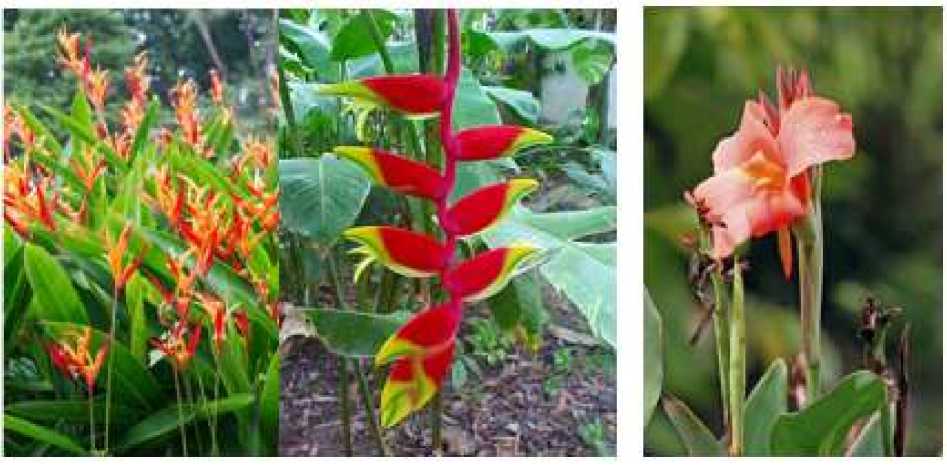
Figure 8. Plants grown in the subsurface flow constructed wetland design: Heliconia sp. (left) and Canna sp. (right)
Canna sp. and Heliconia sp. are normally planted in subsurface flow CWs—for they thrive in a tropical system fed with domestic wastewater and can be
harvested as ornamental flowers (Brix et al., 2011). This system proves efficient in reducing COD and TSS at a high hydraulic loading rate of 440 mm/day (Konnerup et
al., 2009). Moreover, Canna sp. grows fast and can remove a substantial amount of nutrients from wastewater, whereas Heliconia sp. has an economic value as cut flowers (Konnerup et al., 2009). Both species have beautiful and aesthetic appeal
as ornamental flowers, creating high public acceptance of CWs as wastewater treatment facilities, especially in a tropical country like Thailand (Konnerup et al., 2009). Figure 9 shows the top and side views of the cell layout.
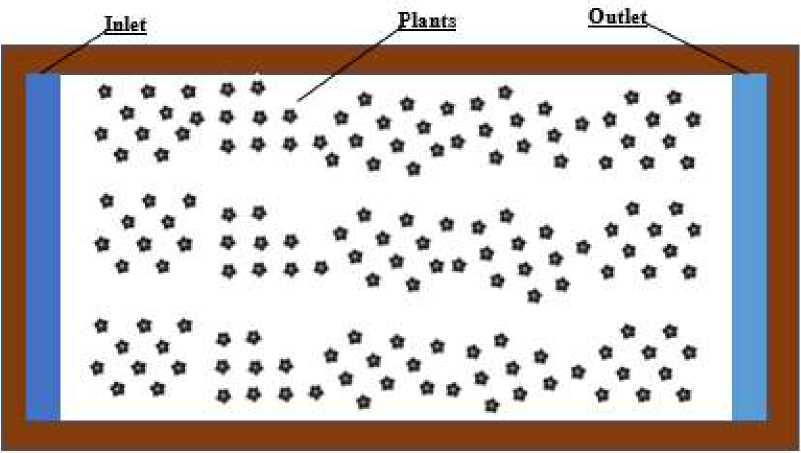
(a) top view (horizontal flow)
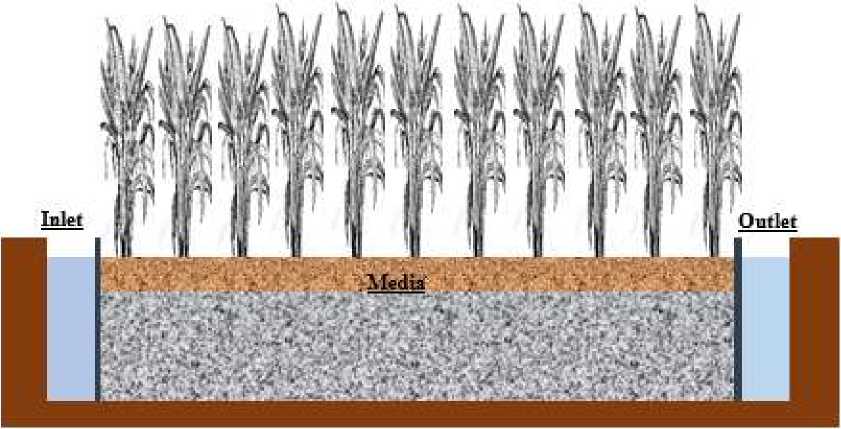
(b) Side View
Figure 9. Top (a) and side views (b) of the constructed wetland cell layout
Constructed wetland location
The entire wastewater treatment plant proposed in this study is approximately 70,000 m2 (7 ha), which considers land availability and the construction of supporting facilities: stabilization ponds that collect municipal wastewater via pipelines or sewerage, CW cells, and pumping stations. In addition, there are
pathways around the plant which serve as public recreational open spaces. The layout and flow diagram of the CWs near the Nong Han Lake are presented in Figure 10. The site selection criteria for the plant include geographical aspects, accessibility (road, electricity), public perceptions, benefits for the surrounding areas and populations, and environmental impact.
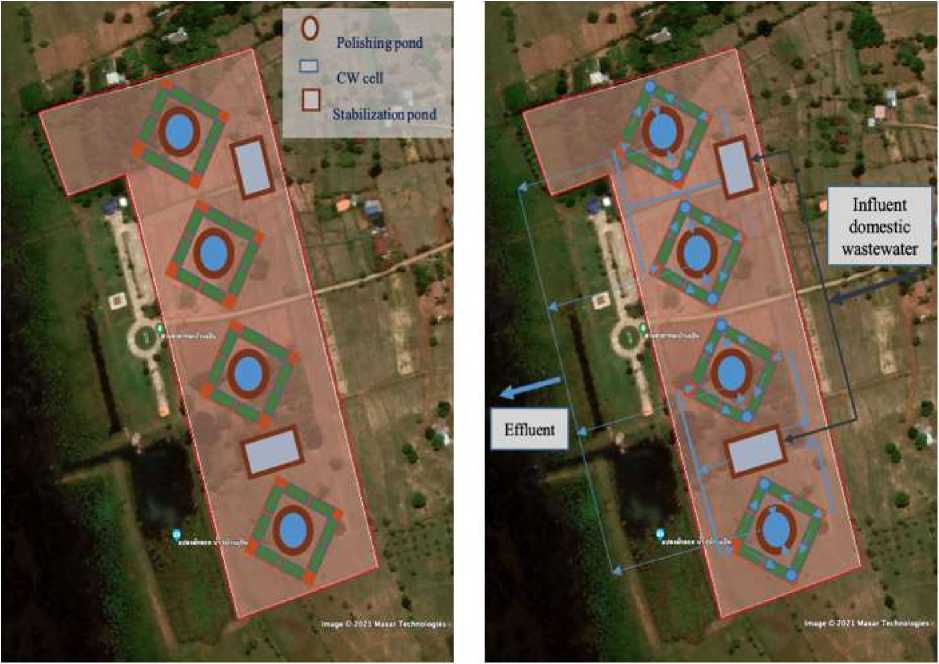
Figure 10. Proposed constructed wetlands and supporting facilities near the Nong Han Lake:
(a) location and layout and (b) treatment system flow.
Pollutant removal efficiency
The mechanisms occurring in HFCW and VFCW include nutrient removal by vegetation (i.e., plant uptake) and organic compound digestion by microorganisms.
Šereš et al. (2017) estimated the effluent characteristics of subsurface flow CWs with tropical plants as seen in Table 4. Compared with the wastewater quality standard issued by the Thailand Ministry of Industry
(2017), the estimated pH, suspended solids, BOD, Total Kjeldahl Nitrogen (TKN), and total phosphate are within the allowable range or below their maximum permissible levels. In other words, the CW’s effluent has few to no contaminants that it can be safely restored to the Nong Han Lake. The estimated parameter values were also used to calculate the removal efficiency of the
designed plant. Results showed that HFCW decreased organic compounds like BOD by more than 90% and that VFCW removed at least 70% of nitrogen from wastewater. Moreover, total suspended solids (TSS) and phosphorus were reduced substantially by up to 95% and 80%, respectively (Vymazal, 2010).
Table 4. Estimated removal efficiency of subsurface constructed wetlands
|
Parameter |
Unit |
Predicted Value |
Quality Standard |
|
pH |
- |
7.0–7.5 |
5.5–9.0 |
|
Suspended solids (SS) |
mg/L |
15–20 |
< 30 |
|
Biological oxygen demand (BOD) |
mg O2/L |
8–10 |
<20 |
|
Total Kjeldahl nitrogen (TKN) |
mg N/L |
10–15 |
<20 |
|
Total phosphate |
mg P/L |
0.8–1.6 |
<2 |
( Šereš et al., 2017, Ministry of Industry, 2017)
CONCLUSIONS
Nong Han Lake is an essential water resource in Thailand. Despite its numerous benefits, wastewater undergoing no to poor treatments generated throughout the catchment is drained to this water body. To deal with persistent lake water pollution, a feasibility study of additional wastewater treatment plants has been conducted. Based on map and literature analyses, the Pone Na Kaew Subdistrict on the east side of the lake has three densely populated settlements believed to dispose of
untreated wastewater to the lake, mainly because the region has no treatment facilities. Therefore, additional plants are proposed for the subdistrict, specifically near Baan Pan Park. Constructed wetlands (CWs) are introduced as the treatment system because they are simple, require low maintenance, and provide public recreational space; all characteristics that suit rural areas like Pone Na Kaew. Based on the estimated removal efficiency, the hybrid CWs that combine horizontal and vertical flows can produce better-quality effluents compliant with the standards 14
issued by the country’s Pollution Control
Department (PCD).
REFERENCES
Boontanon, S. (2013). On-site treatment for domestic wastewater in Thailand. Bangkok: Mahidol University.
Brix, H., Koottatep, T., Fryd, O., &
Laugesen, C. (2011). The flower and the butterfly constructed wetland system at Koh Phi Phi-System design and lessons learned during implementation and operation. Ecological Engineering, 37, 729-735.
CSDI. (n.d.). ขอ้ มูลพนื้ ฐาน ”หนองหาร” (จังหวัดสกลนคร). Retrieved from Civil Society Development Institute: https://www.csdi.or.th/2019/10/nong-han/?fbclid=IwAR2PHleQBRPZz8oR XgzaDfFRvW5XYYBoXp31mbdygnz ww0ey9O2m19JRpQ8#:~:text=หนอง หาร%20มคี วามลกึ ,แม่นํ้าโขงทจี่ ังหวัด นครพนม
Dotro, G., Fort, R., Barak, J., Jones, M., Vale, P., & Jefferson, B. (2015). Longterm performance of constructed wetlands with chemical dosing for phosphorus removal. In: The Role of Natural and Constructed Wetland in Nutrient Cycling and Retention on the Landscape, 273-292.
Konnerup, D., Koottatep, T., & Brix, H. (2009). Treatment of domestic wastewater in tropical, subsurface flow constructed wetlands planted with Canna and Heliconia. Ecological Engineering, 35, 248 – 257.
Ministry of Industry. (2017). Industrial Effluent Standards. Notification of Ministry of Industry regarding Industrial Effluent Standards B.E. 2560. Bangkok, Thailand: Ministry of Industry.
Nookyoo, C. (2019). Introduction of Decentralized Wastewater
Management Approaches of Thailand. WEPA International Workshop.
Parde, D., Patwa, A., Shukla, A., Vijay, R., Killedar, D., & Kumar, R. (2021). A
review of constructed wetland on type, treatment, and technology of wastewater. Environmental
Technology & Innovation, 21, 1-23.
Pollution Control Department. (2017). Guideline of domestic wastewater treatment system. Bangkok: Ministry of natural resources and environment.
Pollution Control Department. (2019). Booklet on Thailand State of Pollution. Pollution Control Department.
Rahman, E., Halmi, M., M, S., Uddin, K., Mahmud, K., Shukor, M. (2020). Design, Operation and Optimization of Constructed Wetland for Removal of Pollutant. International Journal of Environmental Research and Public Health, 17, 8339.
Saengmek, P., Hatashi, S., & Sripirote, K. (2018).
เกาะตดิ สถานการณ์สงิ่ แวดลอ้ มทางนา้ ณ ลมุ่ หนองหาร จังหวัดสกลนคร. Sakon Nakorn: มหาวทิ ยาลัยเกษตรศาสตร ์
วทิ ยาเขตเฉลมิ พระเกยี รติ จังหวัดสกลนคร.
Sakon Nakhon Development Office. (2019,
April 30).
เผยแผนพัฒนาหนองหารลา่ สดุ ! .
Retrieved from
https://www.facebook.com/ptnsnk/pos ts/283612822338239
Šereš, M., Hnátková, T., Vymazal, J., Vaněk, T. (2017). Removal Efficiency of Constructed Wetland for Treatment of Agricultural Wastewaters.
Chemistry Journal of Moldova, DOI: http://dx.doi.org/10.19261/cjm.2017.4 03
Sonavance, P., Munavalli, G., & Ranade, S. (2007). Feasibility of constructed wetland treatment system for septic tank effluent. Journal of the IPHE, 3, 32-36.
Sukthanapirat, R., Suttibak, S., & Jaikaew, P. (2017). Assessment of Nhong Han Lake, Sakon Nakhon, Thailand by U
sing Water Quality Index. GMSARN International Journal, 11, 123-128.
Vymazal, J. (2010). Constructed Wetlands for Wastewater Treatment. Review. Water, 2, 530-549.
Yazdani, V., & Golestani, H. (2019).
Advanced treatment of dairy industrial wastewater using vertical flow constructed wetlands. Desalination and
Water Treatment (162), 149-155.
Yue, J., Jiang, X., Yuan, X., Wang, X., Li, B., & Liu, H. (2017). Design of a multiplexed system for domestic wastewater of Happy Farmer’s Home (HFH) and environmental evaluation using the energy analysis. Journal of Cleaner Production, 156, 729-740.
16
Discussion and feedback